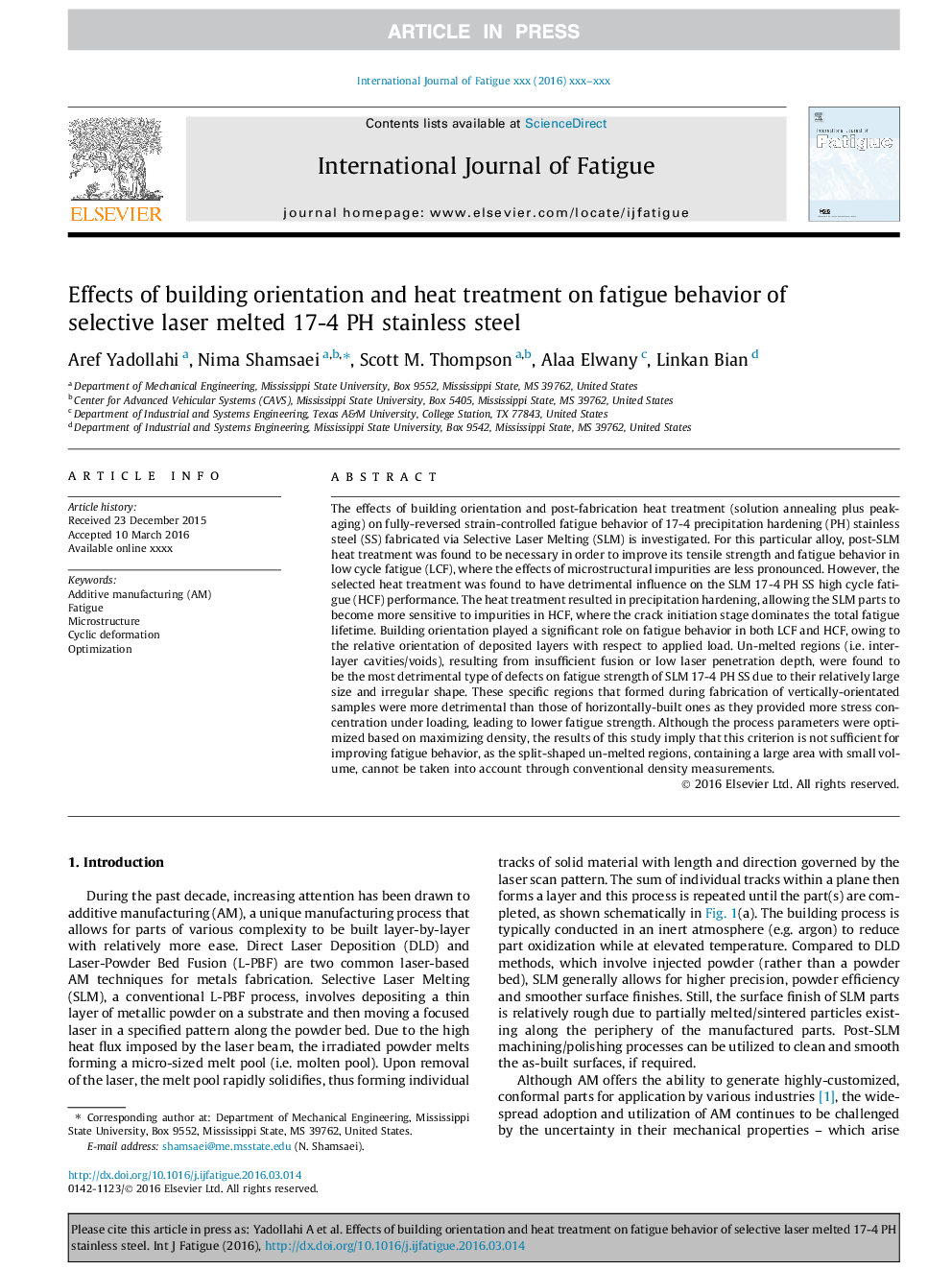| کد مقاله | کد نشریه | سال انتشار | مقاله انگلیسی | نسخه تمام متن |
|---|---|---|---|---|
| 5015382 | 1463731 | 2017 | 18 صفحه PDF | دانلود رایگان |
عنوان انگلیسی مقاله ISI
Effects of building orientation and heat treatment on fatigue behavior of selective laser melted 17-4 PH stainless steel
دانلود مقاله + سفارش ترجمه
دانلود مقاله ISI انگلیسی
رایگان برای ایرانیان
کلمات کلیدی
موضوعات مرتبط
مهندسی و علوم پایه
سایر رشته های مهندسی
مهندسی مکانیک
پیش نمایش صفحه اول مقاله

چکیده انگلیسی
The effects of building orientation and post-fabrication heat treatment (solution annealing plus peak-aging) on fully-reversed strain-controlled fatigue behavior of 17-4 precipitation hardening (PH) stainless steel (SS) fabricated via Selective Laser Melting (SLM) is investigated. For this particular alloy, post-SLM heat treatment was found to be necessary in order to improve its tensile strength and fatigue behavior in low cycle fatigue (LCF), where the effects of microstructural impurities are less pronounced. However, the selected heat treatment was found to have detrimental influence on the SLM 17-4 PH SS high cycle fatigue (HCF) performance. The heat treatment resulted in precipitation hardening, allowing the SLM parts to become more sensitive to impurities in HCF, where the crack initiation stage dominates the total fatigue lifetime. Building orientation played a significant role on fatigue behavior in both LCF and HCF, owing to the relative orientation of deposited layers with respect to applied load. Un-melted regions (i.e. inter-layer cavities/voids), resulting from insufficient fusion or low laser penetration depth, were found to be the most detrimental type of defects on fatigue strength of SLM 17-4 PH SS due to their relatively large size and irregular shape. These specific regions that formed during fabrication of vertically-orientated samples were more detrimental than those of horizontally-built ones as they provided more stress concentration under loading, leading to lower fatigue strength. Although the process parameters were optimized based on maximizing density, the results of this study imply that this criterion is not sufficient for improving fatigue behavior, as the split-shaped un-melted regions, containing a large area with small volume, cannot be taken into account through conventional density measurements.
ناشر
Database: Elsevier - ScienceDirect (ساینس دایرکت)
Journal: International Journal of Fatigue - Volume 94, Part 2, January 2017, Pages 218-235
Journal: International Journal of Fatigue - Volume 94, Part 2, January 2017, Pages 218-235
نویسندگان
Aref Yadollahi, Nima Shamsaei, Scott M. Thompson, Alaa Elwany, Linkan Bian,